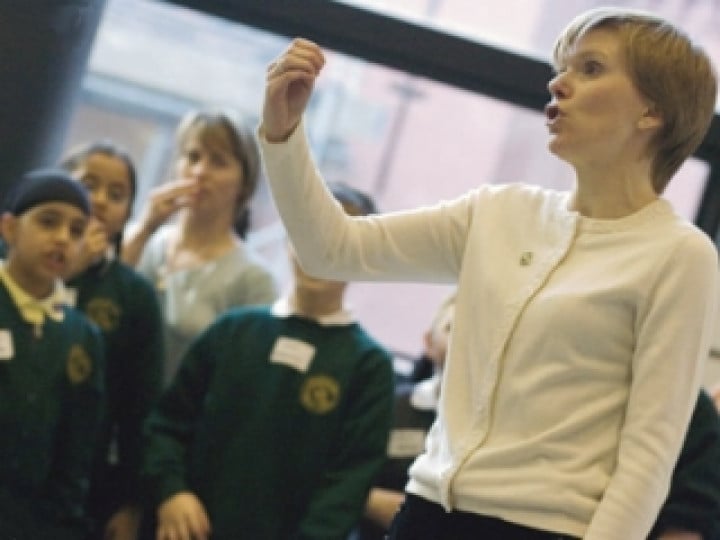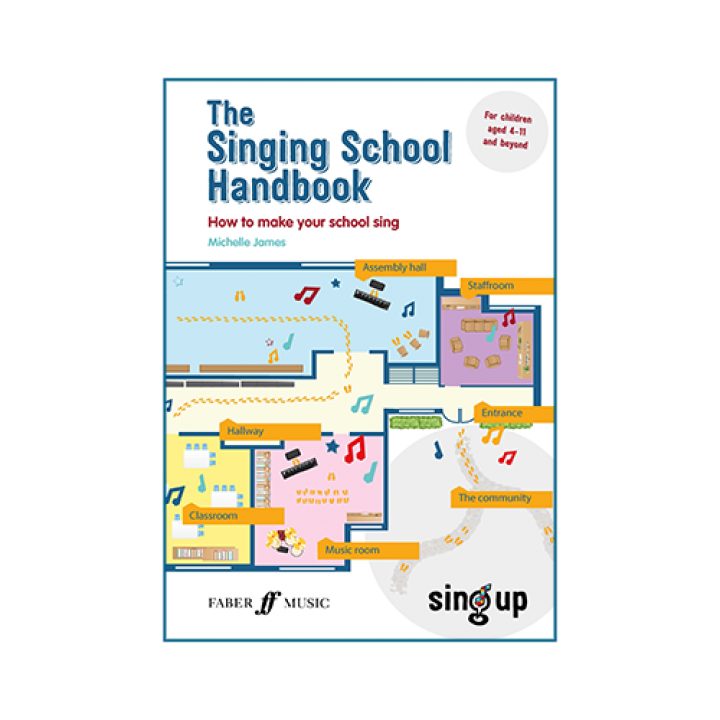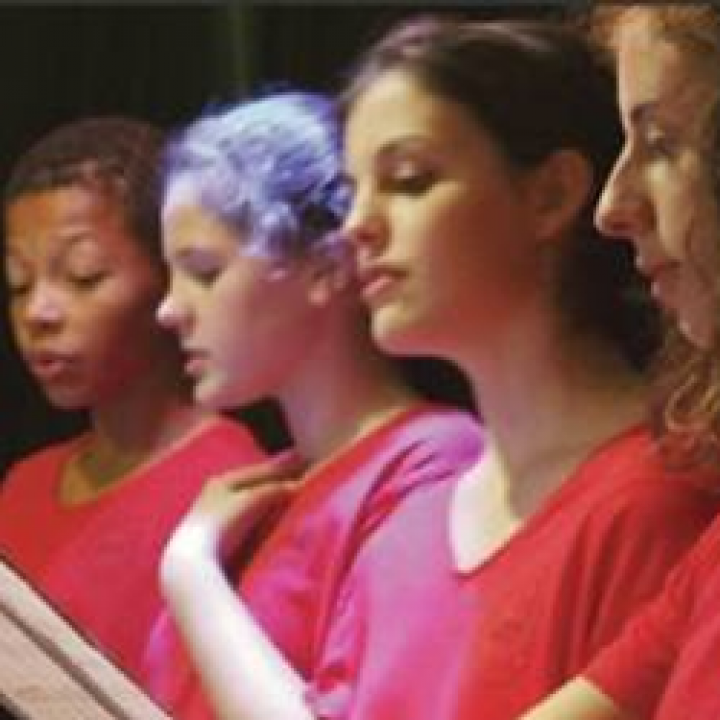
Believe it or not; as a teacher, your voice is central to your career. You are in a group most likely to suffer occupational injury in this area, and learning to look after it is a must. Being involved in singing with your students gives you the ideal opportunity to make some conscious choices and learn techniques to protect yourself. You need to think about how you use and look after your voice, how much you use it, and the environment in which you use it.
I cannot emphasise enough the benefits of warming up. Do some before you teach – even at home. If you’re giving singing lessons, you can warm up with the children. Start with some physical activities such as swinging one arm freely, gradually working up to some ‘backstroke’ type circles – ten or so each side, then maybe some ‘cross-crawl’ for two minutes – gently marching while taking each hand to the outside of the opposing knee as it comes up. Next, stretch with arms up above your head, then out to the sides, then let them fall freely while exhaling quickly, letting your tensions go. these will help achieve a good posture, which is vital for good voice production and should be in your mind whether standing or sitting.
Breathe right
‘Low breathing’ helps you to co-ordinate the right muscles that ‘support’ the vocal mechanism. Sit in a chair or lie down and place the hands on the lowest part of the abdomen, feeling it expand/rise as you breathe IN and decrease/fall as you breathe OUT. Imagine the breath getting lower with each cycle. The breaths should be normal in size and quite slow. Finally you can sing an ‘aaahh’ sound on the out breath.
Warming up the voice can start with sliding up and down through the range or scale, gradually increasing the range in both directions, using a rolled ‘r’, ‘mmmm’ or ‘vvvvv’, then a ‘ng’ (as in ‘sing’).
You should not expect to use your voice continuously in any kind of lessons. This is really down to lesson planning. Have ‘voice breaks’ in mind when you space activities.
Stop and listen
Teachers often sing along with their students all the time, in the mistaken belief that this supports them and gives energy and confidence. Actually, it is the teacher who uses all the energy in that situation and the students never gain independence! If you can be courageous enough to stop, they will surprise you! You cannot properly assess how well your students are singing if you are singing at the same time.
So my advice is to demonstrate first, then listen. This also encourages students to listen, enabling peer assessment and the development of constructive critical skills. It can help if you place stronger singers next to those who struggle. Try some rhythm games that do not involve much vocalising as well as ‘call-and-response’ activities that involve the children listening and then singing back to you.
Whispering is just as bad for your voice as shouting, so aim for a comfortable medium loud. Always sing to the best of your ability: no half-singing!
Turn that CD down!
Backing tracks and sing-along CDs should be just that, whereas I often see them used like the main act with a little bit of noise from straining singers! Your students really will gain in confidence if they can hear themselves. See how softly you can play audio accompaniment tracks.
‘Crowd control’ is an art in all lessons, especially with enthusiastic, noisy youngsters. Don’t try and compete with the din since this tends to raise, rather than lower, the noise level. Your method should not involve shouting and definitely not anger, yet should be effective and reproducible. Successful methods include raising the arm, playing a particular tune or chord, simply ‘being quiet’ and waiting, using a percussion sound, or drawing a certain sign on a blackboard. Alternate energetic and noisy activities with more sedentary, quieter or listening ones so the children have a chance to calm down as well as burn up energy!
Vocal TLC
Using small group activities, especially for creative ideas and composing, is a way of giving your own voice a rest while increasing active student input. But do walk up to a group to address it rather than shout across the room. Be aware of temporarily (glue ear) or permanently deaf children who will need to be placed near you.
Drink plenty of water: six to eight glasses a day. The mucus that keeps vocal folds working smoothly requires your whole system to be well-hydrated. Alcohol will dehydrate them, as will as a dry atmosphere. Smoke, dust, diesel or other noxious fumes are disastrous.
The teaching environment is essentially the responsibility of your employer, but you are in the best position to highlight problems like ‘boomy’ acoustics, competiting noises, an overly dry atmosphere or an inappropriate class size. In rare cases, a microphone with speakers around the class might be needed.
One of the most important things to be aware of is that when you are ill with anything, especially with a sore throat or hoarse voice, you must take extra care not to strain or over-use the voice. Teachers rarely feel they can take time off, but you can change your lesson plans and materials to minimise the amount of speaking you have to do. Stress often produces tensions in the throat, so recognising stress and finding ways to relieve it are important. If hoarseness goes on for three weeks, or if you have recurrent problems you must see your doctor with a view to referral to a Specialist Voice Clinic.
You might also try having a few singing lessons, Alexander lessons, speech therapy sessions, or joining the Voice Care Network UK. More information can be found at websites of the British Voice Association, hazards.org and the National Union of Teachers.
Karenna Caun, MBBS, MRCP is a mentor (voice) for the CTABRSM. She is a trained medical doctor and RNCM trained singer. She teaches singing privately, in a school and at Lancaster University. She regularly performs in concert, in oratorio, and has undertaken several operatic roles. She is a committee member of The International Society for the Study of Tension in Performance, and also a practitioner for British Association for Performing Arts Medicine. She works intensively with instrumental musicians, singers and teachers to help them prevent and overcome playing/singing related injuries. She gives lectures on the subject at several conferences.



